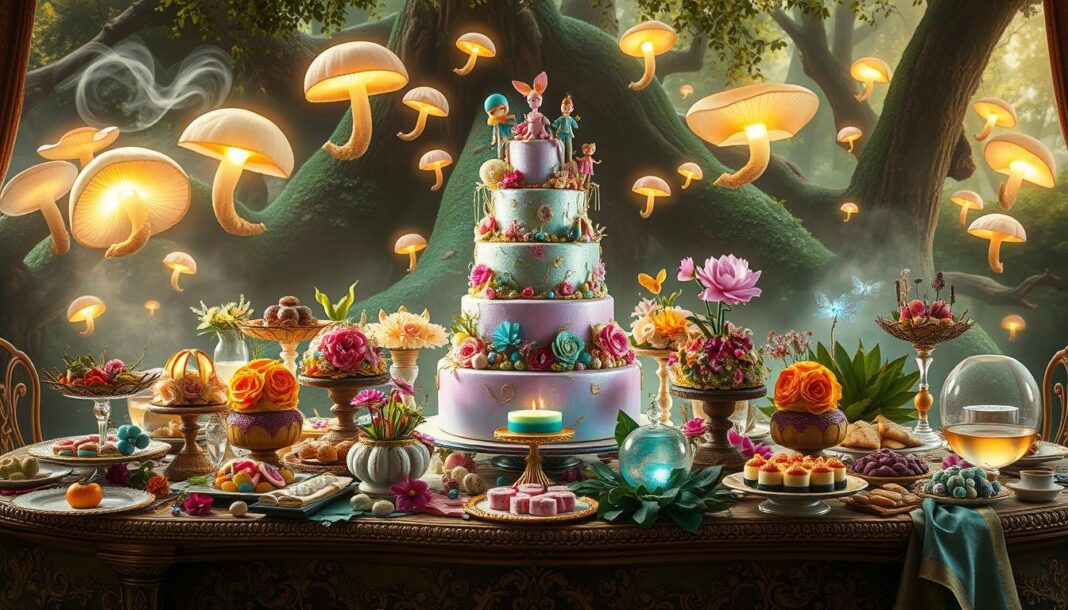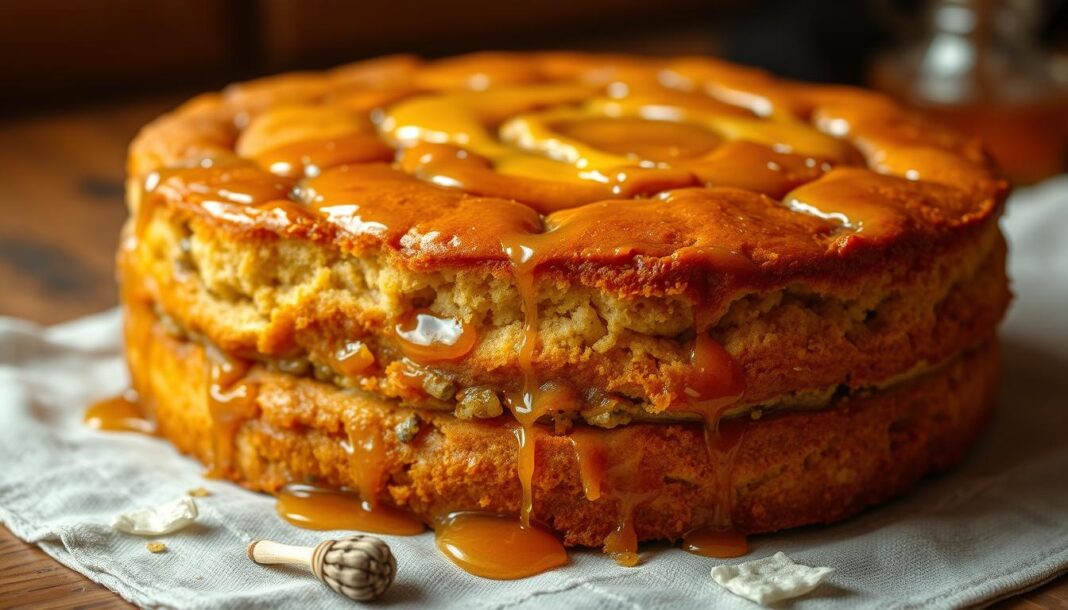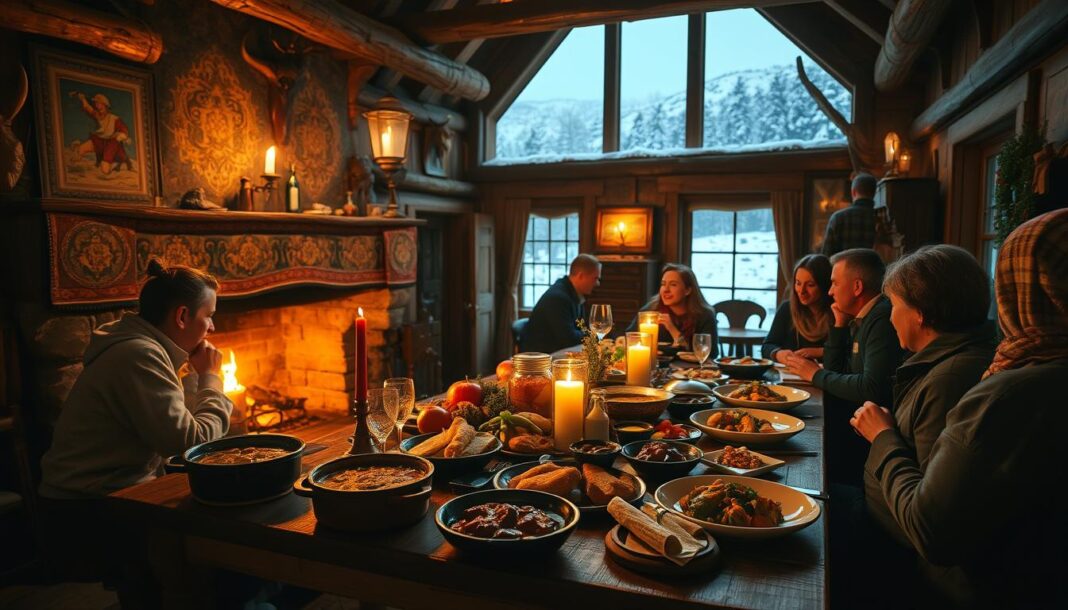Food is more than just sustenance; it’s a reflection of the society we live in. Just as our real-world cuisine mirrors our cultures and lifestyles, fantasy foods serve as a window into the fictional worlds they inhabit.
From the hearty stews of dwarven mines to the ethereal confections of elven forests, the culinary delights of fantasy realms tell stories beyond mere sustenance. We’re diving into the imaginative world of fantasy cuisine, exploring how it reveals societal structures, values, and environments through the food characters eat and how they prepare it.
By understanding the foundations of fantasy food creation, we can appreciate the worldbuilding aspects while enjoying the creative process of bringing imagination to our tables. For instance, exploring recipes inspired by fictional worlds, such as those found in Game of Thrones, can be a delightful culinary adventure.
Key Takeaways
- Discover how fantasy cuisine reflects the cultures and societies of fictional worlds.
- Explore the role of food in worldbuilding and storytelling.
- Learn practical techniques for bringing fantasy delicacies into your real-world kitchen.
- Understand the intersection of culinary science and fantasy imagination.
- Appreciate the creative process of adapting fictional recipes for modern cooking.
The Magic of Fantasy Foods
The allure of fantasy foods lies in their ability to represent more than just sustenance; they embody the essence of fictional cultures and worlds. Fantasy Cookery focuses on recipes inspired by these imaginary realms, showing how the food we eat reflects our society, lifestyle, and attitudes towards food.

Why Fantasy Foods Captivate Our Imagination
Fantasy foods captivate us because they are deeply intertwined with the world-building and cultural richness of fantasy narratives. The sensory descriptions of food in these stories create a powerful connection between the reader and the fictional world. We’re drawn to these culinary descriptions because they offer both familiarity and novelty, often combining recognizable elements with magical or impossible components.
From Fiction to Reality: The Appeal of Magical Cuisine
The translation of fictional fantasy food into real-world culinary experiences represents a unique form of fan engagement, allowing us to physically experience elements of our favorite stories. This process not only delights fans but also inspires creativity in cooking. At the same time, it gives us a chance to explore different things we can do with food at a particular time.
| Media Form | Examples of Fantasy Foods | Culinary Inspiration |
|---|---|---|
| Literature | Feasts in J.R.R. Tolkien’s works, magical dishes in fairy tales | Traditional European cuisine, mythological ingredients |
| Film and TV | Roast mutton in “Game of Thrones,” magical potions in “Harry Potter” | Medieval cuisine, fantasy ingredients like dragon’s breath |
| Games | Potions in “The Elder Scrolls,” fantasy dishes in “Final Fantasy” | Various global cuisines, magical and alchemical ingredients |
In the world of fantasy, culinary experiences are not just about sustenance; they’re about immersion, culture, and the magic that brings these worlds to life.
Understanding the Culinary Triangle in Fantasy Worlds
The culinary triangle, a concept introduced by Claude Lévi-Strauss, offers valuable insights into the world offantasyfoods. This framework links cooked, raw, and rotten food according to human wants and needs, revealing cultural and biological prejudices.
Raw, Cooked, and Rotten: Food Hierarchies
Humans typically value cooked foods highest, followed by raw food, with fermented or “rotten” foods often at the bottom of the hierarchy. However, fantasy races might have entirely different hierarchies, influenced by their environments and cultural practices.
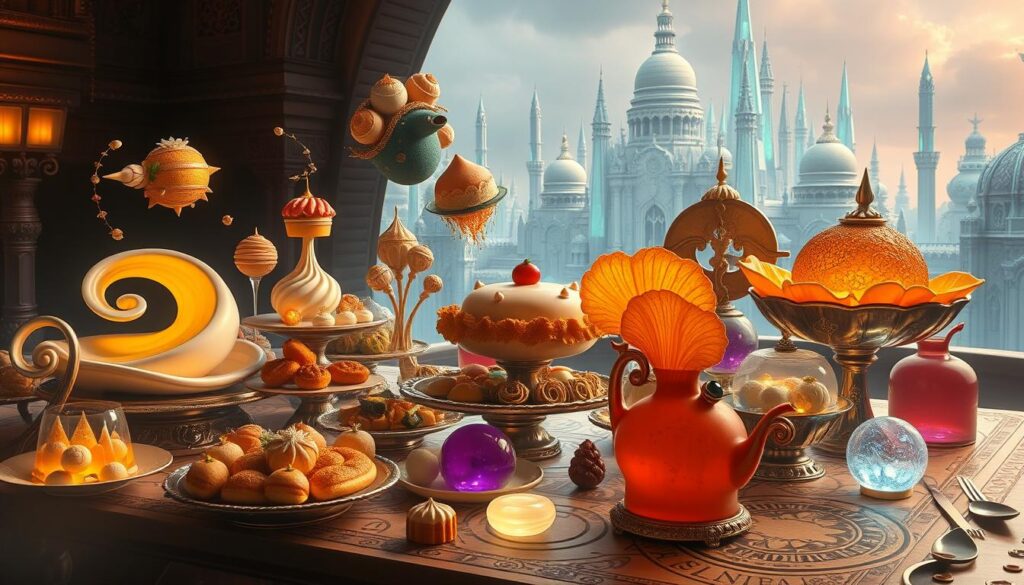
How Different Fantasy Races Approach Food
Different fantasy races may approach cooking and consumption in unique ways. For instance, elves might prefer raw, living foods that connect them to nature, while dwarves might favor heavily processed, preserved food for long storage. The value placed on cheese can also vary, with dwarves potentially prizing aged varieties and elves enjoying fresh ones.
Building Your Fantasy Food Foundation
The key to crafting mouthwatering fantasy foods lies in understanding the staple ingredients that define a cuisine. Just as potatoes are fundamental to Irish cooking or rice is central to Japanese cuisine, fantasy foods need a base that grounds them in reality.
To establish this foundation, we must consider the environment in which our fantasy races live. What grows there? What animals are available? What preservation methods would be necessary for survival? The answers to these questions will help us identify the staple ingredients for our fantasy recipes.
Identifying Staple Ingredients for Fantasy Recipes
When selecting staple ingredients, we need to balance practical considerations with cultural values. For example, in a frozen wasteland, hardy root vegetables might be a staple, while in a volcanic region, foods that can be preserved through smoking or drying might be more prevalent. These ingredients will form the base of our fantasy cuisine.
Creating Unique Flavor Profiles
Once we have our staple ingredients, we can start developing unique flavor profiles by considering how they interact with each other. This might involve combining ingredients in innovative ways or using different cooking techniques to bring out distinct flavors. The result will be a fantasy cuisine that is both familiar and magical, with foods that are both hearty and refined.
Step-by-Step Guide to Creating Fantasy Foods
In the realm of fantasy, food is not just sustenance, but a window into the world’s soul. Crafting these culinary delights requires a thoughtful approach, blending creativity with culinary expertise.
Selecting Your Fictional Inspiration
The journey begins with selecting compelling fictional inspiration—whether from a beloved book series, film, or your own imagination. We recommend starting with a clear vision of the culture, environment, and character associated with your fantasy food to ensure authenticity.
Adapting Real-World Ingredients
Adapting real-world ingredients to represent fictional components provides a practical window into fantasy realms. Techniques such as using colored food dyes, unusual spice combinations, and creative presentation can transform ordinary ingredients into magical concoctions, bringing your fantasy foods to life.
Testing and Refining Your Creation
The testing phase is crucial, as you’ll need to balance imaginative elements with actual palatability and cooking science. Document your process, noting which techniques successfully create the desired visual and flavor effects, and refine your recipes accordingly.
Popular Fantasy Foods Worth Recreating
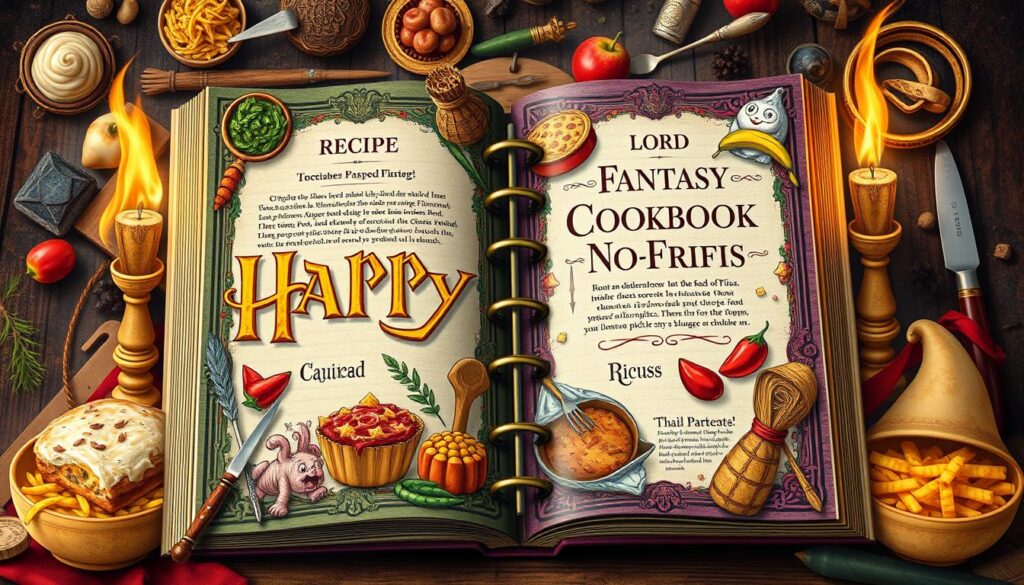
Recreating fantasy foods from our favorite books and movies has become a delightful hobby for many, bringing fictional worlds to life in our kitchens. Fantasy literature and cinema offer a rich source of inspiration, with dishes like butter beer from Harry Potter and lembas bread from Lord of the Rings captivating our imagination.
Beloved Dishes from Fantasy Literature
Fantasy literature is replete with memorable foods that transport us to magical realms. The cheese-centric dishes from Terry Pratchett’s Discworld series are excellent examples, balancing familiar ingredients with imaginative presentations. We can also recreate the honey cakes from The Hobbit, which have become a favorite among fantasy food enthusiasts.
Iconic Meals from Fantasy Films and Games
Fantasy films and games often feature visually striking foods that challenge home cooks to recreate their magic. The stews from Game of Thrones are a popular recreation project, offering a glimpse into the culinary world of Westeros. By adapting real-world ingredients and techniques, we can bring these iconic meals to life in our own kitchens.
The Rule of Three: Simplifying Fantasy Cooking
At its core, fantasy cooking is about combining simple ingredients in unique ways. We often find that the most iconic dishes, both in reality and in fantasy, are built around a few fundamental components. This simplicity allows for a focus on creativity and authenticity, making fantasy cooking accessible to everyone.
Base + Flavor + Magical Element
The Rule of Three provides an elegant framework for creating fantasy foods. By focusing on a base ingredient, a distinctive flavor component, and a magical or fantasy element, we can craft dishes that are both memorable and true to their fictional origins. The base ingredient, such as potatoes or grains, provides structure and substance, grounding the dish in familiar territory.
Examples of Three-Ingredient Fantasy Dishes
Let’s consider a few examples of how this rule can be applied. A fantasy version of a cheeseburger might include a base of meat, a flavor component like a spicy sauce, and a magical element such as a cheese that grants temporary buffs. Similarly, a fantasy gratin could be made with potatoes as the base, a creamy sauce for flavor, and an ingredient
By applying the Rule of Three, we can simplify the process of creating fantasy foods, making it easier to craft dishes that are both delicious and immersive. This approach mirrors many successful real-world recipes, where iconic dishes often rely on just three core components.
Bringing the Magic to Your Table
The art of fantasy cooking lies in its ability to evoke a sense of wonder and magic at the dinner table. We create memorable dining experiences that transport our guests to imaginary realms through taste, presentation, and storytelling.
To start, we encourage you to begin with simpler recipes—perhaps a hearty potato stew inspired by tavern fare or a cheese plate with names and descriptions drawn from your favorite fantasy world. Creating a complete themed dining experience enhances the impact of your fantasy foods.
Sharing the stories behind your fantasy recipes adds depth to the dining experience, creating a window into the fictional worlds that inspired your cooking. Over time, you’ll find that even simple sauce or garnishes can become extraordinary things when infused with fantasy.
